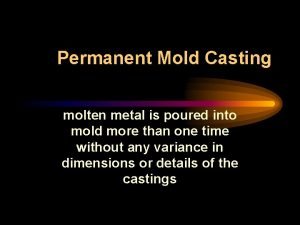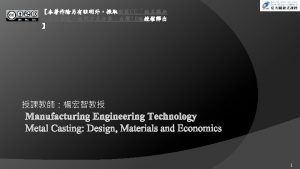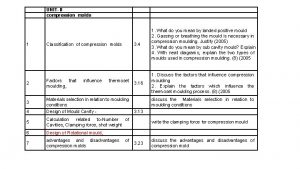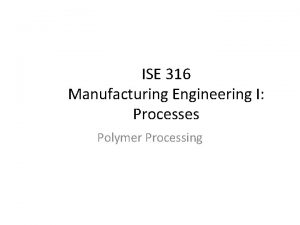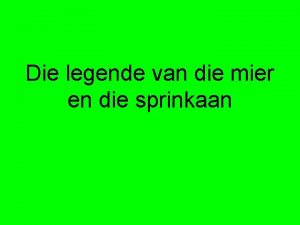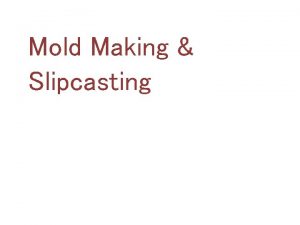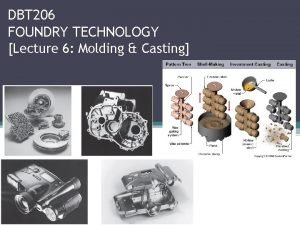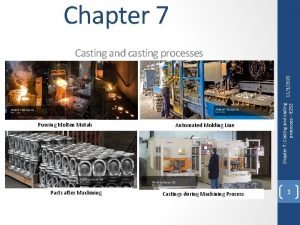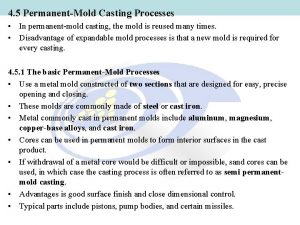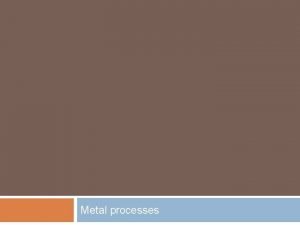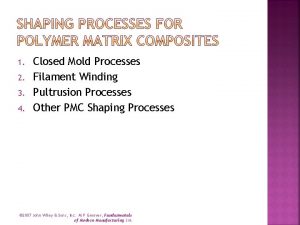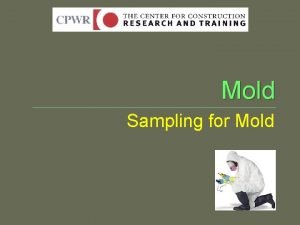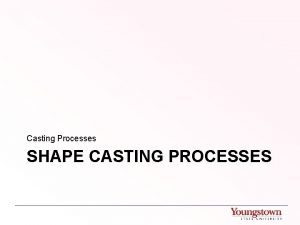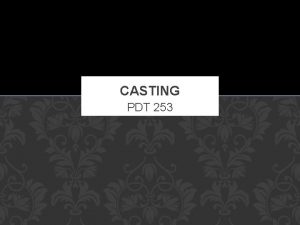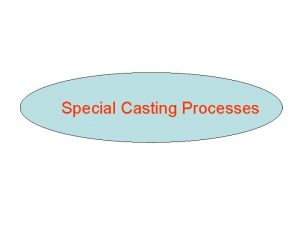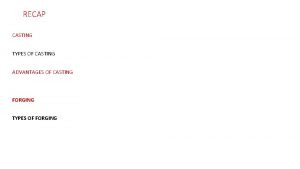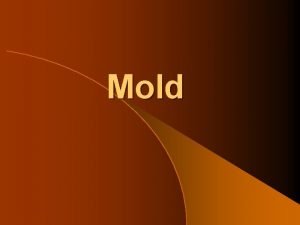Die Casting a permanent mold casting process using















- Slides: 15

Die Casting a permanent mold casting process using pressure other than gravity

Parameters 4 shot pressures 1000 to 100, 000 psi 4 highly mechanized 4 cycle times – up to 18, 000 shots per hour – small components like zipper teeth

Parameters (Cont. ) 4 1/2 the die fastened to stationary platen 4 1/2 the die fastened to movable platen actuated by piston 4 casting pushed out by ejector pins

Two types of machines 4 hot chamber 4 cold chamber

Hot chamber machine 4 chamber is submerged in molten metal 4 forced into cavity by plunger 4 use low melting metals like – lead, tin, zinc 4 metals that don’t attack and erode the metal pot, cylinder, and plunger

Cold chamber machine 4 molten metal ladled into shot chamber (chamber not heated) 4 metals cast – higher melting point – al, magnesium, copper, ferrous metals

Flash 4 metal has flowed between die halves at parting line 4 reduced by adequate pressure clamping both die halves together 4 removed by shearing, blanking, grinding

Machine selection 4 rated according to clamping pressures – 25 to 3000 tons 4 die size 4 piston stroke 4 shot pressure 4 cost

Dies 4 water or oil cooled 4 use of release agents 4 wear increases with temp of molten metal 4 heat checking - surface cracking from repeated heating and cooling is a problem 4 can last up to 500, 000 shots before significant wear occurs

Die Design 4 draft 4 removal of sprues and runners

Types of die cavities 4 single 4 multiple - several identical cavities 4 combination - several different cavities 4 unit - simple small dies that can be combined in two or more units in a master die

Application 4 carburetors 4 small motors 4 business machines and appliance components 4 hand tools 4 toys

Advantages 4 can be automated 4 minimum expenditure of metal 4 thin wall sections (. 020”) 4 components cast internally – pins, shafts, fasteners

Advantages (Cont. ) 4 close tolerances 4 little or no finishing after removal of gate and flash 4 because molten metal chills rapidly, achieve fine grain structure with hard skin and higher strength

Disadvantages 4 equipment costs high
 Advantages of permanent mold casting
Advantages of permanent mold casting Expendable mold casting advantages and disadvantages
Expendable mold casting advantages and disadvantages In permanent mould casting, the molten metal is poured
In permanent mould casting, the molten metal is poured Permanent mold casting
Permanent mold casting Protists unicellular or multicellular
Protists unicellular or multicellular Plunger type transfer moulding
Plunger type transfer moulding Pot type mold & plunger type mold are the classification of
Pot type mold & plunger type mold are the classification of Die sprinkaan en die mier
Die sprinkaan en die mier Slip casting mold making
Slip casting mold making Advantages of expendable mold casting
Advantages of expendable mold casting Pouring temperature of metals
Pouring temperature of metals Liquid metal
Liquid metal Die casting punch
Die casting punch Syx motto
Syx motto Closed mold process
Closed mold process Die kinder verbringen die ferien
Die kinder verbringen die ferien


